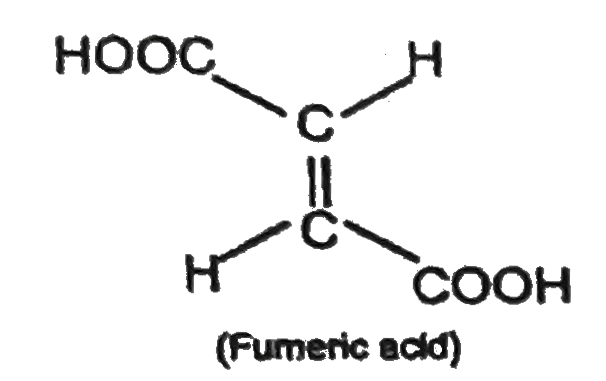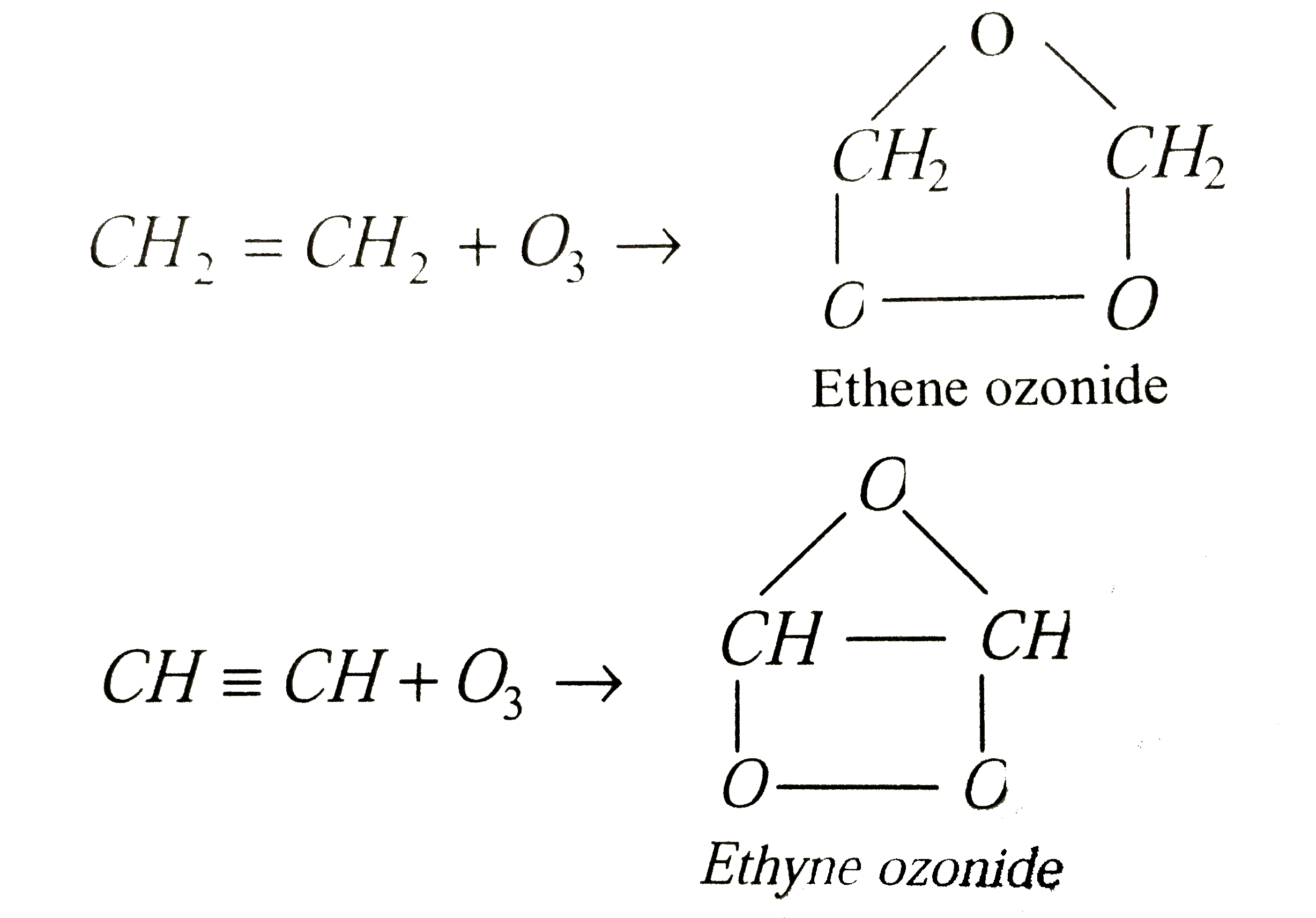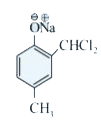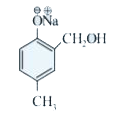Explore topic-wise InterviewSolutions in .
This section includes InterviewSolutions, each offering curated multiple-choice questions to sharpen your knowledge and support exam preparation. Choose a topic below to get started.
| 13651. |
Which one of the following undergoes reaction with 50% sodium hydroxide solution to give the corresponding alcohol and acid |
|
Answer» Phenylmethanal |
|
| 13652. |
The structure of the intermediate formed in the Riemer Tiemann reaction is : |
|
Answer»

|
|
| 13653. |
Two hybrid orbitals have a bond angle of 120^(@). The percentage ofp-character in the hybrid orbital is nearly:- |
|
Answer» `25%` |
|
| 13654. |
Which of the two components of starch in water soluble ? |
| Answer» SOLUTION :AMYLOSE is water SOLUBLE but amylopectin is water INSOLUBLE. | |
| 13655. |
Which is correct about the heat of combustion: |
|
Answer» The combustion be EXOTHERMIC in some CASES and endothermic in other cases. |
|
| 13656. |
The treatment of an alkyl halide with underline("silver cyanide ")forms an alkyl cyanide. |
| Answer» Solution :The treatment of an ALKYL HALIDE with KCN FORMS an alkyl cyanide. | |
| 13657. |
Which of the metal is extracted by Hall-Heroult process ? |
|
Answer» Al |
|
| 13658. |
Which of the following statements about liquid nitrogen is true |
|
Answer» It is unreactive |
|
| 13659. |
The value of paramagnetic moment of Ti^(3+) ion in Bohr magnetons is |
|
Answer» `5.9` |
|
| 13660. |
Which iscorrect for EA ? |
|
Answer» `CIgtFgtBrgtIgtS` |
|
| 13662. |
Which of the following reacts fastest with concentrated HCI? |
|
Answer»
Carbocation (ii) is the most stable since it is not only a `2^(@)` carbocation but is also stabilized by RESONANCE. HENCE alcohol (b) reacts at the fastest rate. |
|
| 13663. |
Why soaps do not work in hard water ? |
|
Answer» Solution :In hard WATER soapsreactswith calciumandmagnesium ions of hard waterto forminsoluble SOAP. Hencesoaps do notwork in hard water. `2C_(17)H_(36)COONa + underset("INSOLUBLE calium STERATE")(CaCI_(3) to (C_(17)H_(36)COO)CA)+ 2NaCl` |
|
| 13664. |
Which of the molecules below will react with Ag^(+)? |
|
Answer» <P>(P), (R ) and (T) |
|
| 13665. |
Which of the following statements about Na_(2)O_(2) is not correct ? |
|
Answer» `Na_(2)O_(2)` oxidises `CR^(3+)` to `CrO_(4)^(2-)` in acid medium |
|
| 13666. |
What is the oxidation number of nitogen in nitrous oxide. |
| Answer» SOLUTION :O.N. of N in NITROUS OXIDE is +1 | |
| 13667. |
What happens when formaldehyde is treated with methanol in the presence of conc. H_(2)SO_(4)? |
| Answer» SOLUTION :Methylal is FORMED. `HCHO+2CH_(3)Ohoverset("Conc. "H_(2)SO_(4))RARR underset("Methylal")(CH_(2)(OCH_(3))_(2))+H_(2)O` | |
| 13668. |
Which one of the following statements are true? (1) Transition metals from alloys (2) Transition metals form complexes (3) Zn, Cd and Hg are transition metals (4) K_(2)[PtCl_(6)] is a well known compound, but corresponding nickel compound is not known. |
|
Answer» 1, 2 |
|
| 13669. |
Which of the following acid remains unaffected on heating ? |
|
Answer» Malonic acid 
|
|
| 13670. |
Write name and structure of monomers of following polymer : Polythene |
|
Answer» SOLUTION :ETHENE `H_2C = CH_2` |
|
| 13671. |
Which of the following amino acid at isoelectric point will react with nitrous acid and liberate nitrogen gas ? |
|
Answer» Phenylalanine 
|
|
| 13672. |
Which of the following is not sex hormones? |
|
Answer» testosterone |
|
| 13673. |
The vitamin which maintain the redox potentials of cells is |
|
Answer» FOLIC ACID |
|
| 13674. |
Which of the following amine(s) after diazotization will form deeply coloured azodye with alkaline solution of beta-naphthol : |
|
Answer»
|
|
| 13675. |
Which of the following is not a property of Metallic Solids? |
|
Answer» Malleability |
|
| 13676. |
Which one is not correct ? |
|
Answer» `t_(1//2)` of zero ORDER REACTION is DEPENDENT of initial CONCENTRATION of reactant |
|
| 13677. |
Which of the following statements about the interstitial compounds is incorrect- |
|
Answer» they have higher MELTING POINTS than the pure metal |
|
| 13678. |
Which statement about the order of reaction is correct: |
|
Answer» The order .of reaction MUST be a positive integer |
|
| 13679. |
Which one of the following is called a carbylamine |
|
Answer» `RCN` |
|
| 13680. |
Which gas is evolved by the treatment of magnesium with very dilute solution of HNO_(3) |
|
Answer» `N_(2)` `Mg +underset("nitric acid")underset("Dilute")(2HNO_(3)) to Mg(NO_(3))_(2)+underset("Hydrogen")(H_(2)uarr)` `2Mg(NO_(3))_(2) OVERSET(DELTA)to2MgO +4NO_(2)+O_(2)` |
|
| 13681. |
The specific conductance of a salt of 0.01M solution is 1.061xx10^(-4)ohm^(-1)cm^(-1) . Molar conductance of a same solution is ( in ohm^(-1)cm^(2)"mole"^(-1)) |
|
Answer» `1.061xx10^(-4)` |
|
| 13682. |
The4d and 5d series of transition metals have more frequent metal - metal bonding in their compounds than do the 3d metals. Explain |
| Answer» Solution :In the same group of d-block elements, the 4D and 5d transition elements have larger size than that of 3d ELEMENT. Thus, the valnece electrons are LESS tightly held and hence can form metal-metal bond more frequently .( That is why melting point of4d and 5d SERIES as well as enthalpies of atomisationn are higher than those of 3d series ). | |
| 13683. |
Which of the following have an (18 + 2) electron configuration ? |
|
Answer» `PB^(2+)` |
|
| 13685. |
Which one is Lewis acid ? |
|
Answer» `PCl_(3)` |
|
| 13686. |
When ethyl alcohol is oxidised by copper, then which of the following aldehyde is formed ? |
|
Answer» FORMALDEHYDE THUS PRIMARY alcohol which is ETHYL alcohol `(CH_3CH_2OH)` is reduced by copper and forms acetaldehyde `(CH_3CHO)` |
|
| 13687. |
Why alcohols cannot be used as solvents with (a) Grignard reagent |
|
Answer» Solution :Alcohols are sufficiently acidic to react with STRONG BASES `R^(-) : and H^(-)` : `CH_(3)OH+H-overset(H)overset(|)underset(H)underset(|)C-MgX rarr CH_(4)+(CH_(3)O)-MgX` `4CH_(3)OH+LiAlH_(4)rarr 4H_(2)+LiAl(OCH_(3))_(4)` |
|
| 13688. |
Which one of the following compounds does not form an ozonide |
|
Answer» Ethene 
|
|
| 13689. |
Which of the following order is correct for the property mentioned in brackets? |
|
Answer» `S^(2-) GT Cl^(-) gt K^(+) gt Ca^(+)" (Ionization energy)"` |
|
| 13690. |
Volume of 0.5 M Ba (OH)_(2) require to neutralize 100 ml 0.8 M H_(3) PO_(3) is : |
|
Answer» `100 ML` `H_(3)PO_(3) rarr n = (0.8 xx 100 mL)` `H_(3)PO_(3)` is a diabasic acid Equal moles of `Ba(OH)_(2)` and `H_(3)PO_(3)` are needed `n_(Ba (OH)_(2)) = n_(H_(3)PO_(3)` `M_(1)V_(1) = M_(2) V_(2)` `0.5 xx (V)/(1000) = 0.8 xx (100)/(1000)` `V = (8 xx 100)/(5) = 6 mL` |
|
| 13691. |
Which of the following is least ionic |
|
Answer» `C_(2)H_(5)CL` |
|
| 13692. |
Two gases A and B having molecular weigths 60 and 45 respectively are enclosed in a vessel. The wt. of A is 0.50 g and that of B is 0.2 g. The total pressure of mixture is 750 mm. Calculate partial pressure of the two gases. |
|
Answer» SOLUTION :Given wt. of gas A=0.50 g mol wt. of gas A=60 Wt, of gas B =0.2 g. Molecular wt. gas B =45 `P_(T) =750 mm` From Dalton.s law of PARTIAL pressure `P_(A) =P_(T) xx` MOLE frection of A. `=750 xx (0.50//60)/((0.50)/(60)+(0.2)/(45))=489.23 mm`. `P_(T) =P_(A) +P_(B)` `THEREFORE P_(B) =P_(T)-P_(A)=750-489.23` `=260.77 mm`. |
|
| 13693. |
The standard enthalpy of formation of NH_(3) is -46.0kJmol^(-1). If the enthalpy of formation of H_(2) from its atoms is -436kJmol^(-1), the average bond enthalpy of N-H bond in NH_(3) is |
|
Answer» `-964kJmol^(-1)` `2H(g)toH_(2)(g),DeltaH_(f)^(@)=-436" kJ "Mol^(-1)` `2N(g)toN_(2)(g),DeltaH_(f)^(@)=-712" kJ "mol^(-1)` Bond enthalpy of `NH_(3)` `=3BE_(N-H)[(1)/(2)BE_(N-N)+(3)/(2)BE_(H-H)]` `-46=3N-N-[-(1)/(2)xx712-(3)/(2)xx436]` `3N-H=-1056" kJ "mol^(-1)` `N-H=(1056)/(3)=-352" kJ "mol^(-1)` |
|
| 13694. |
Which of the following will undergo aldol condensation? |
|
Answer» Acetaldehyde |
|
| 13695. |
Write some uses of bromine. |
|
Answer» Solution :USED as oxidising agent Used as GERMICIDE Used for TESTING unsaturation in organic compound. |
|
| 13696. |
Which dicyclic base is present in RNA ? |
|
Answer» GUANINE |
|
| 13697. |
Which of the following does not react with acetyl chloride ? |
|
Answer» `(C_(2)H_(5))_(2)NH` |
|
| 13698. |
Two liquid A and B form an ideal solution on mixing. The vapour pressure of solution having 1 mole A and 3 mole B is 550 mm at 300 K temp. The vapour pressure will increased by 10 mm. on addition of 1 mole B to the solution. What will be the vapour pressure of A and B individually ? |
|
Answer» <P>500 and 600 `P_(A)^(0)X_(A)+P_(B)^(0)X_(B)=P_("TOT")` `therefore P_(A)^(0)((1)/(1+3))+P_(B)^(0)((3)/(1+3))=550 mm` `therefore 0.25 P_(A)^(0)+0.75P_(B)^(0)=550 mm`….(1) Now add 1 mole B to MIXTURE `0.20 P_(A)^(0)+0.80 P_(B)^(0)=560 mm` .....(2) multiply (1) by 4 `therefore P_(A)^(0)+3P_(B)^(0)=2200` multiply (2) by 5 `therefore P_(A)^(0)+4P_(B)^(0)=2800` `therefore P_(A)^(0)=400 mm =P_(X)^(0)` `P_(A)^(0)=600 mm = P_(Y)^(0)`. |
|
| 13699. |
Volume occupied by hydrogen gas at 2 atm and 273 .^(@)C which contain 2 gm atoms of hydrogen is - |
|
Answer» `11.2` litre `n_(H_(2)) = (n_(H))/(2) = (2)/(2) = 1` `PV = nRT` for `H_(2)` GAS `2 xx V_(H_(2)) = 1 xx 0.0821 xx 546` `2 xx V_(H_(2)) = 2 xx 22.4` `V_(H_(2)) = 22.4` litre |
|
| 13700. |
Two oxides of lead were separately reduced to metallic lead by heating in a current of hydrogen and the following data obtained: (i) Mass of yellow oxide taken = 3.45 g, Loss in mass during reduction = 0.24 g (ii) Mass of brown oxide taken = 1.227 g, Loss in mass during reduction = 0.16 g Show that the above data illustrate the Law of Multiple Proportions. |
| Answer» Solution :CALCULATE the mass of lead combined with 1 g of oxygen in each CASE which are 13.375 g and 6.669 g, i.e, in the RATIO of `2:1`. | |













